Capital Markets Drive Economies
U.S capital markets are the largest in the world: 41% of global equity and 40% of global fixed income. They account for the dominant $ value and % of global activity in every market sector, representing on average 46% of total global market activity.
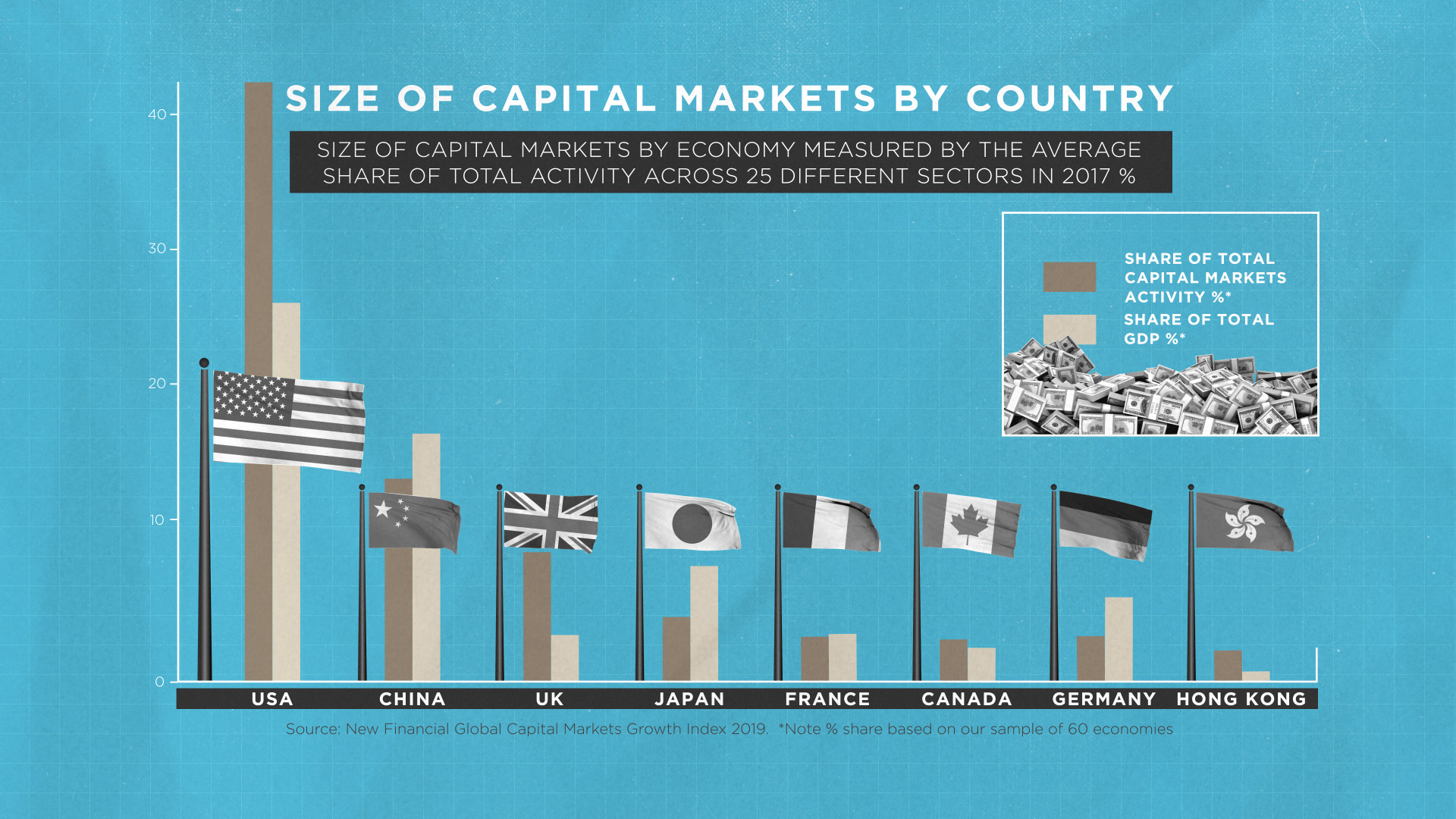
Why is it important that the U.S. remains the deepest, most liquid and most efficient capital markets in the world? First and foremost, they provide diversified funding options. This means we are more attractive to businesses looking for capital and also means that the U.S. economy is less vulnerable to economic or market shocks.
We’ll explain: in other countries, bank lending dominates corporate borrowing. Because bank lending is cyclical, it dries up after economic shock.
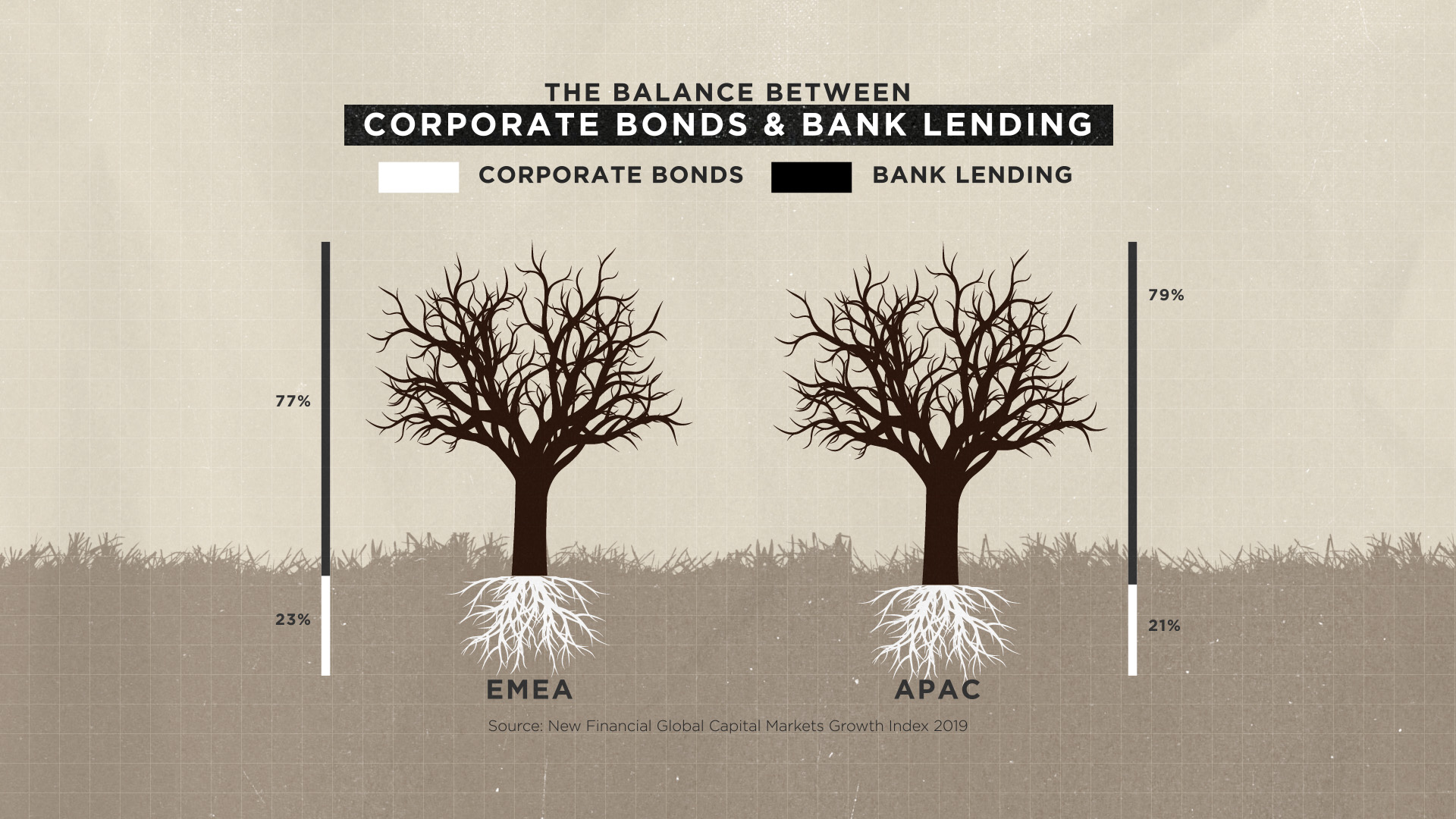
In the U.S., the inverse is true: bank lending accounts for just 26% of corporate borrowing, while corporate bonds are 74%.
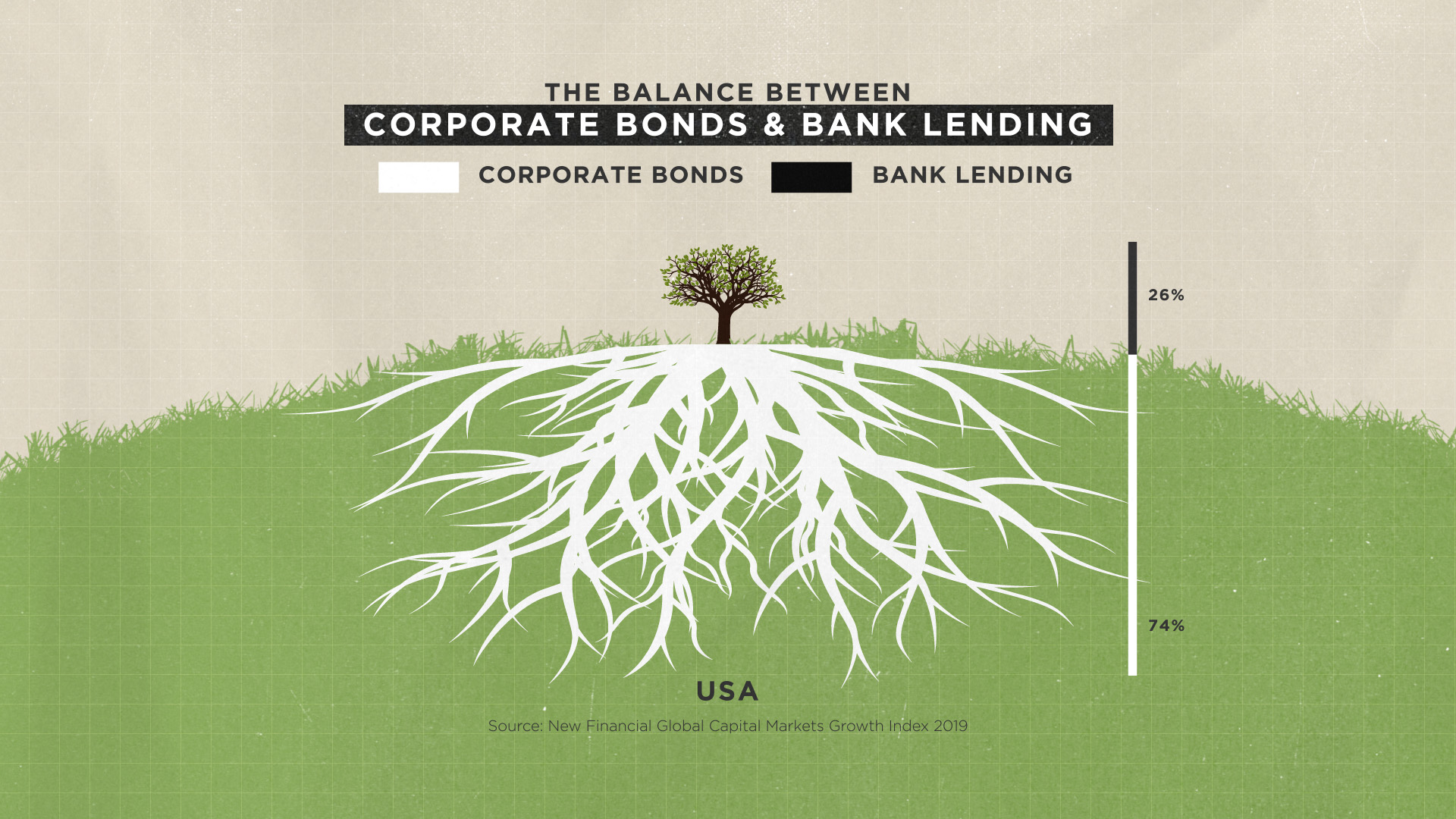
During periods of economic stress, capital markets diversify funding and act as a shock absorber. Our recessions are therefore shallower and our economic expansions longer than in any other country.
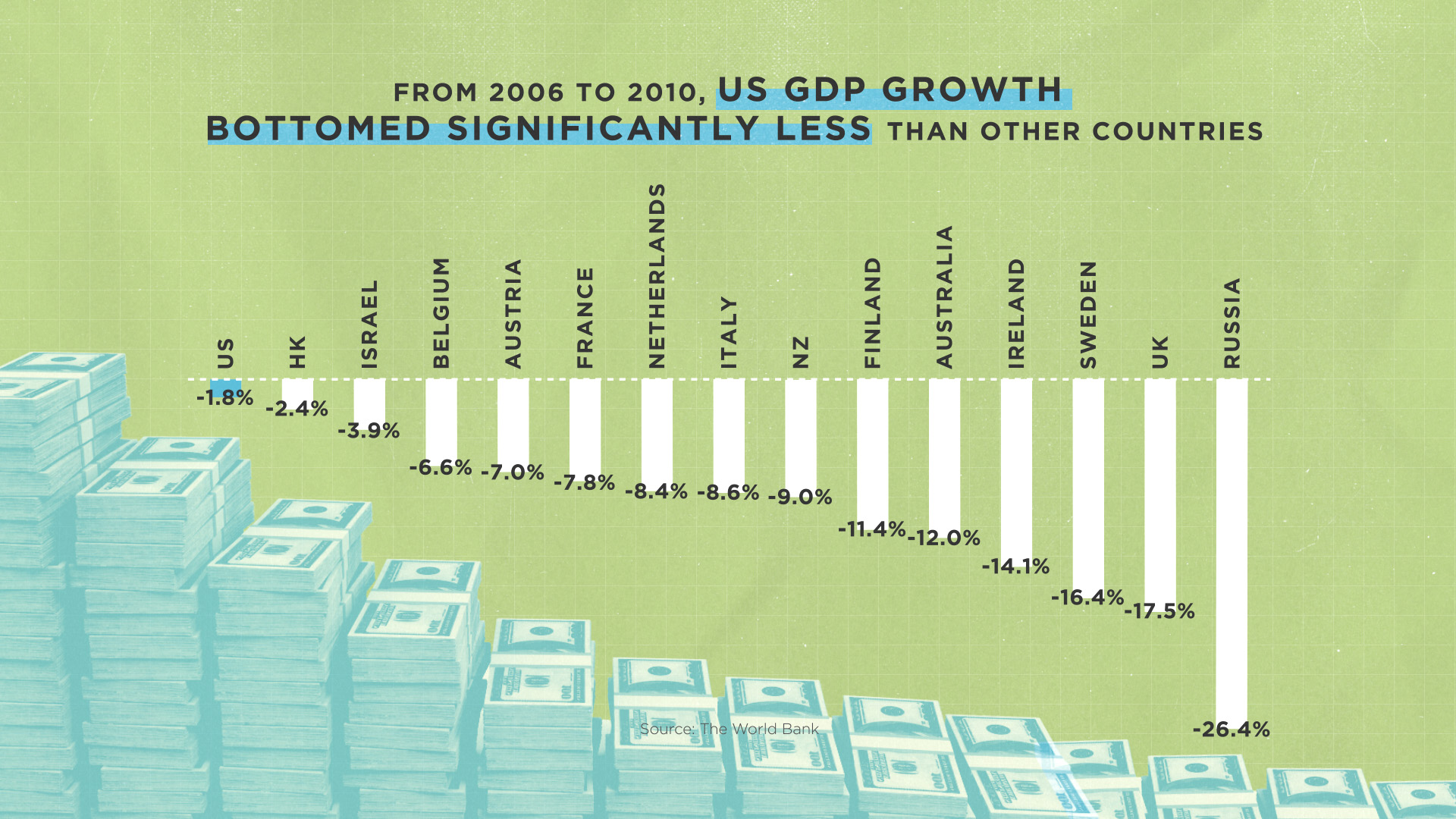
Recognizing the vulnerabilities of heavy reliance on bank lending, urgent calls for capital market development in other regions abound. The EU is arguing the merits of a Capital Markets Union (CMU); in Asia, emerging markets are attempting to open access via local exchanges; and the International Finance Corporation of the World Bank Group has made developing local capital markets a strategic priority.
Capital Markets Drive Opportunity
Today, we see a clear relationship between capital market depth and GDP per capita when expressed as purchasing power parity. Higher GDP per capita means individuals have higher disposable income and the potential to save more; additionally, deeper capital markets may help drive higher GDP per capita through the more efficient allocation of capital.
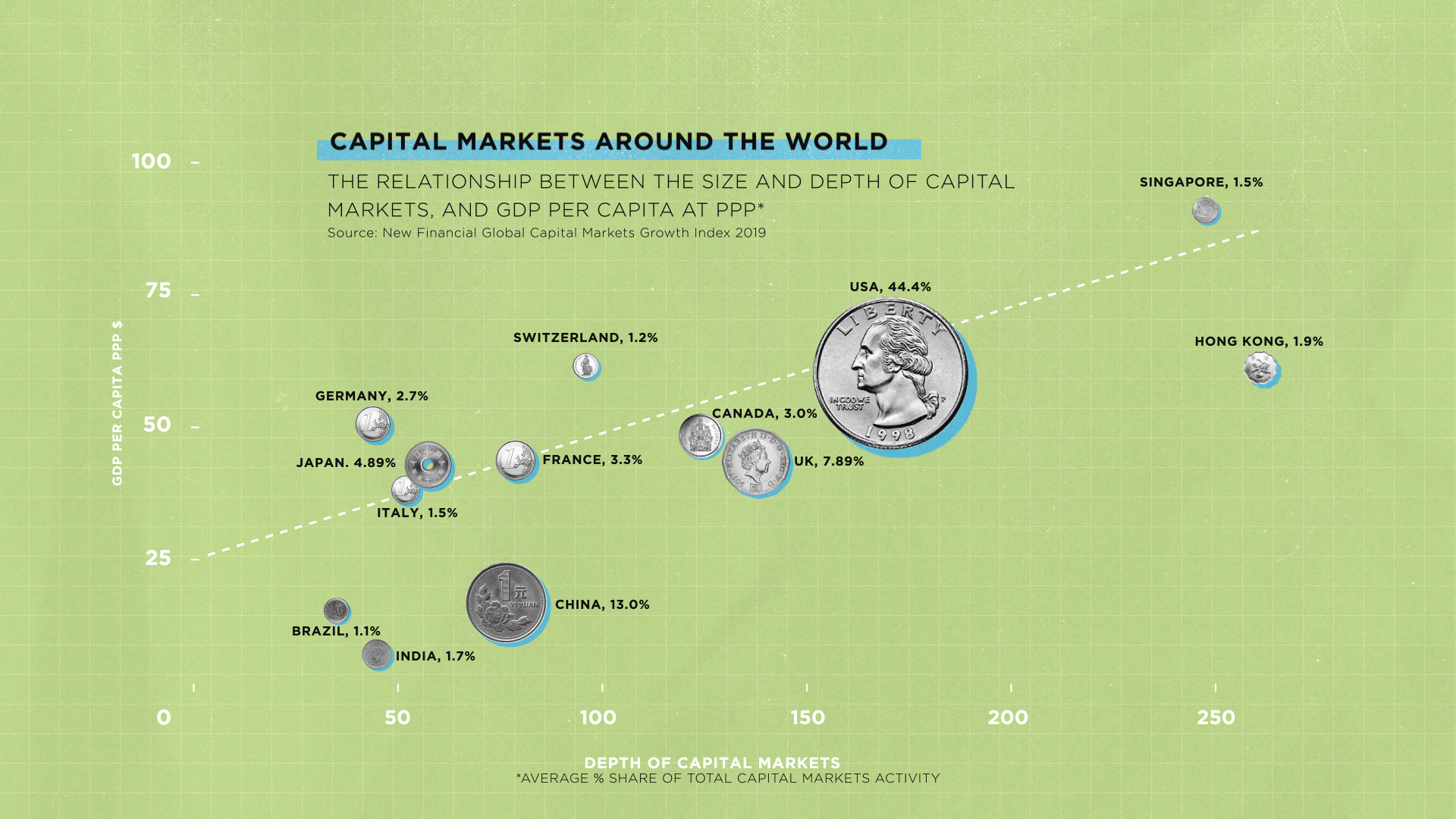
Capital Markets Need Nurturing
There is a global shift occurring: by 2030, it is estimated Asia-Pac will overtake the Americas market share and account for more than half of all global capital markets activity by 2040. It is expected the Americas’ market share will decrease from 46% today to 40% in ten years.
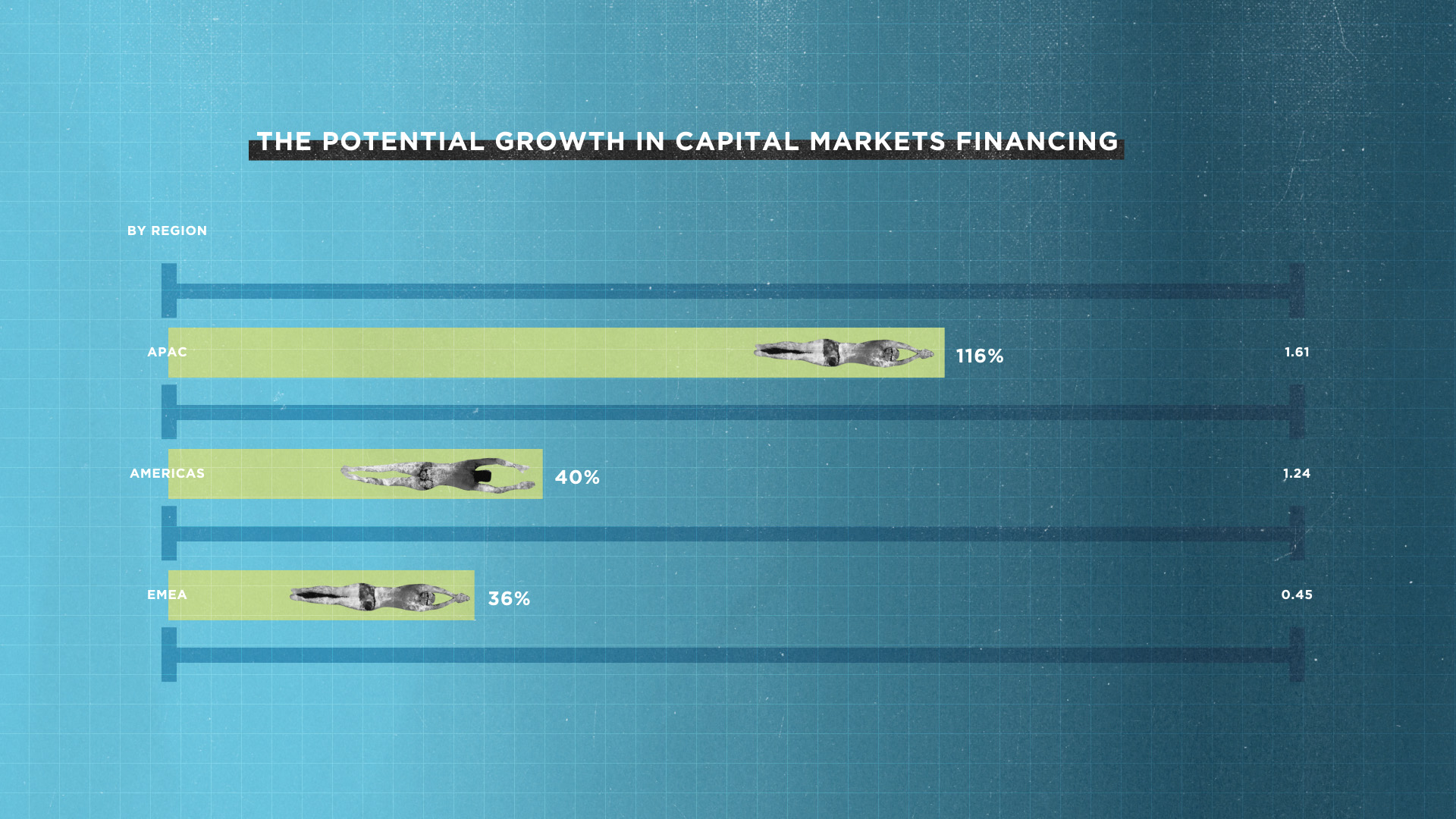
There is a correlation between the relative depth of capital markets and the quality and stability of the wider business, legal and regulatory environment. With its entrepreneurial spirit and business-friendly culture, the U.S. ranks second in business environment. However, it lags behind at fourteenth in terms of the government and regulatory environment which in the future can impede the growth and resilience of our markets.
The Wider Business, Legal and Regulatory Environment
Top 10 ranking based on a range of indices of non-financial metrics
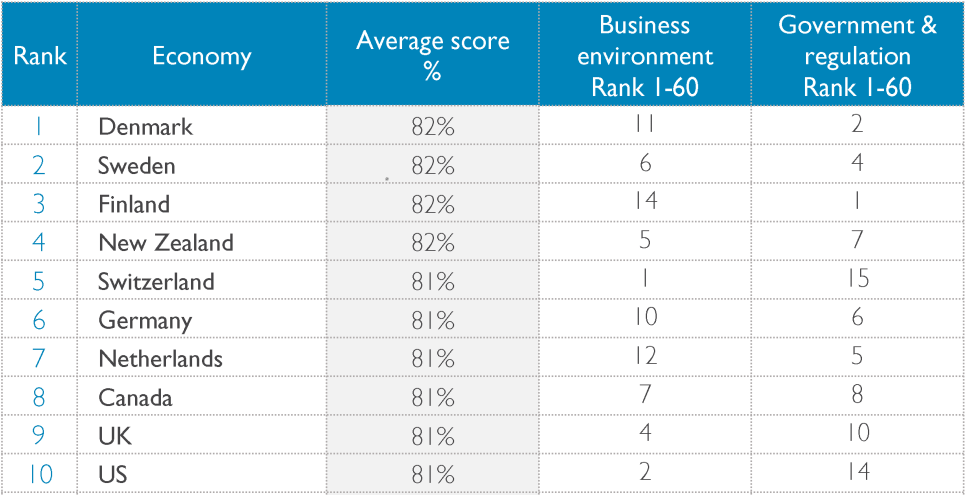
Source: New Financial Global Capital Markets Index
Steps We Must Take
We may not always be the largest, but our depth and liquidity is what matters most. We’ve always met challenges head-on – with a unique combination of grit, innovation, and decisiveness. There are definitive steps we can take to ensure U.S. capital markets remain the deepest, most liquid, and the best:
- Ensure high standards of market integrity and investor protection
- Encourage pools of capital through workplace and private pensions
- Promote financial literacy and a strong retail investor culture
- Calibrate supervision and regulation with innovation and growth
Interested in learning how we got here?
From a basic set of capitalist ideas that can be traced back to the Magna Carta, America’s capital markets have flourished over centuries of innovation, setbacks and growth. Find out how they came to be with this walk through history.
Related Resources
-
Video Series
Our Markets
Watch the full video series to explore how, together, we can take concrete steps to ensure the pre-eminence of U.S. capital markets.
-
SIFMA Insights
Thoughtful and unique views on the markets, the industry and the economy.
-
The New Financial Global Capital Markets Growth Index
This report provides an in-depth review and comparison of national and regional capital markets across the globe in terms of market size, depth, and access to pools of capital.